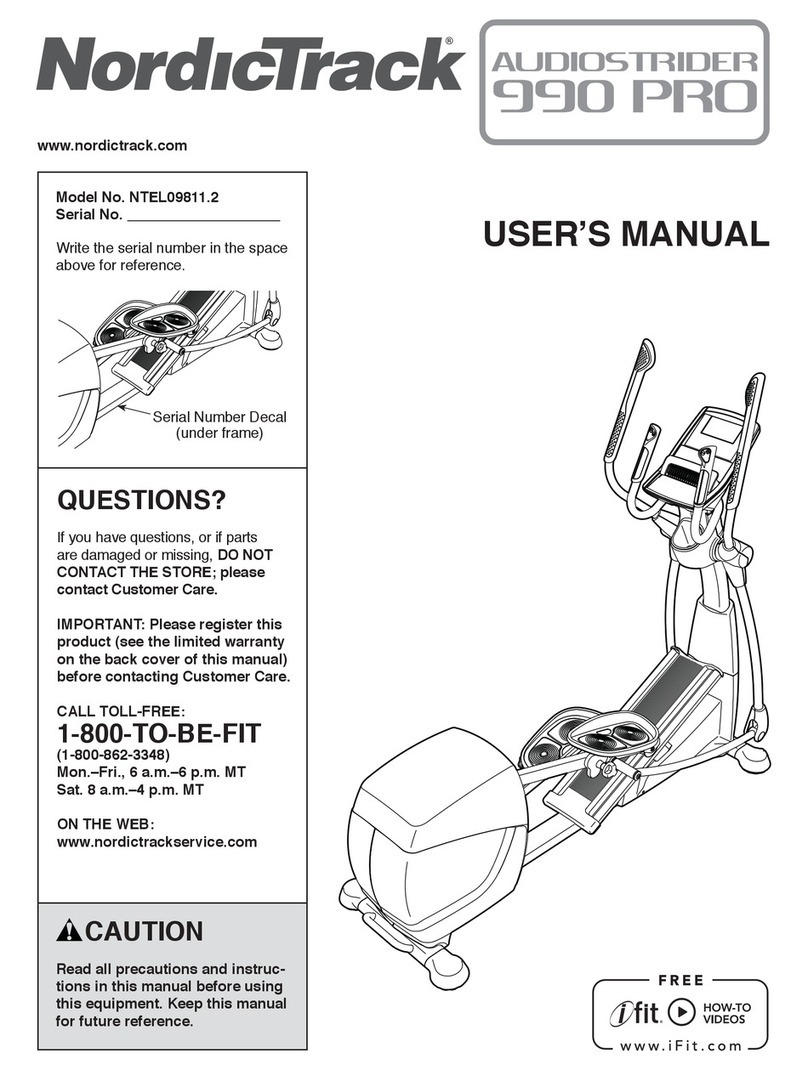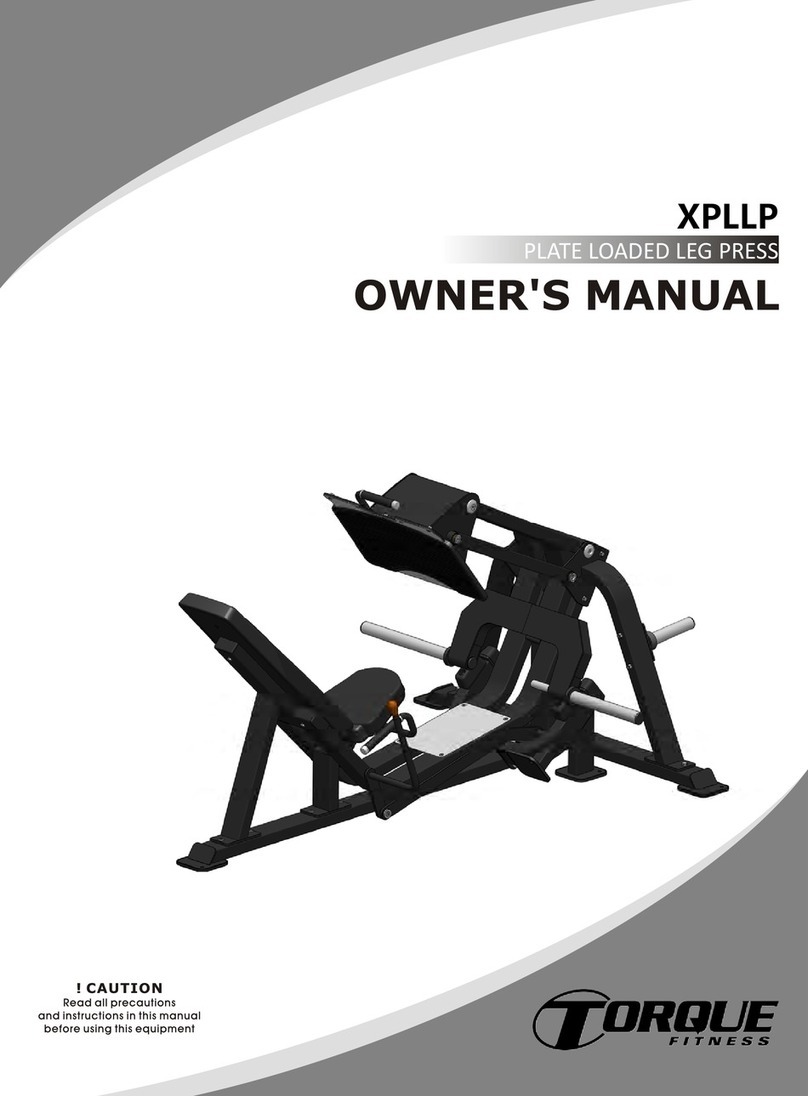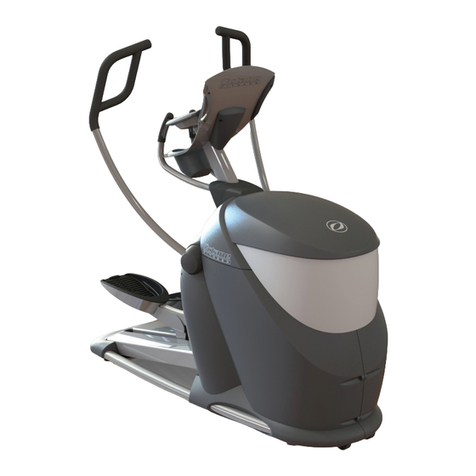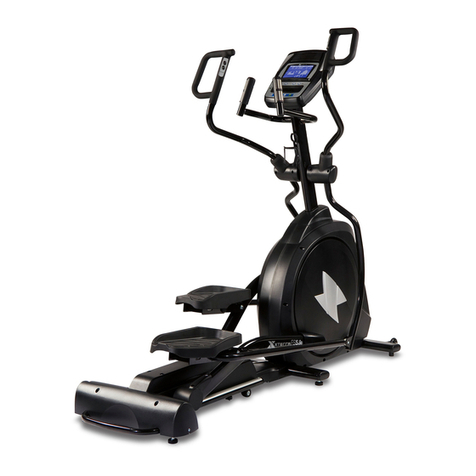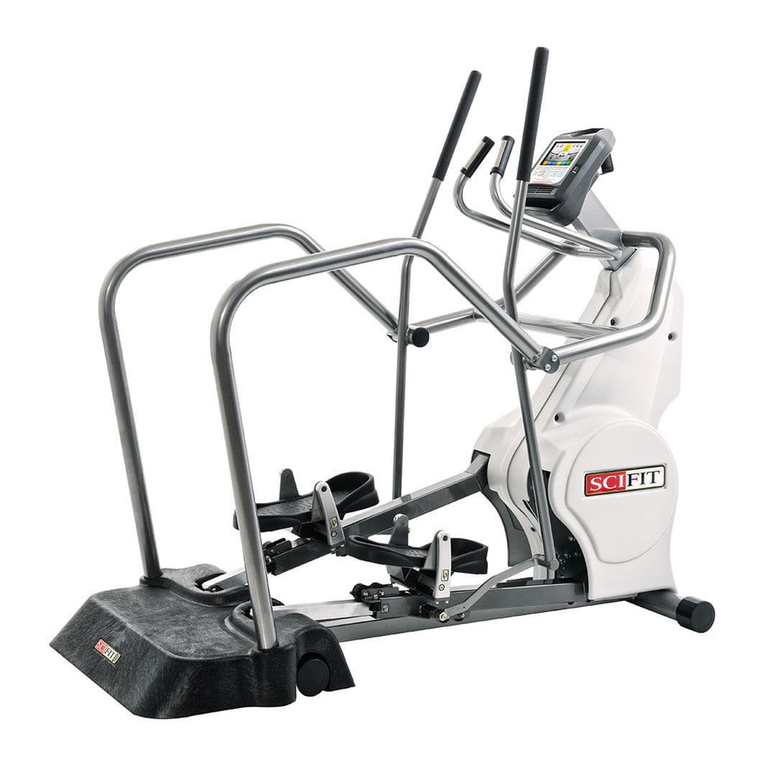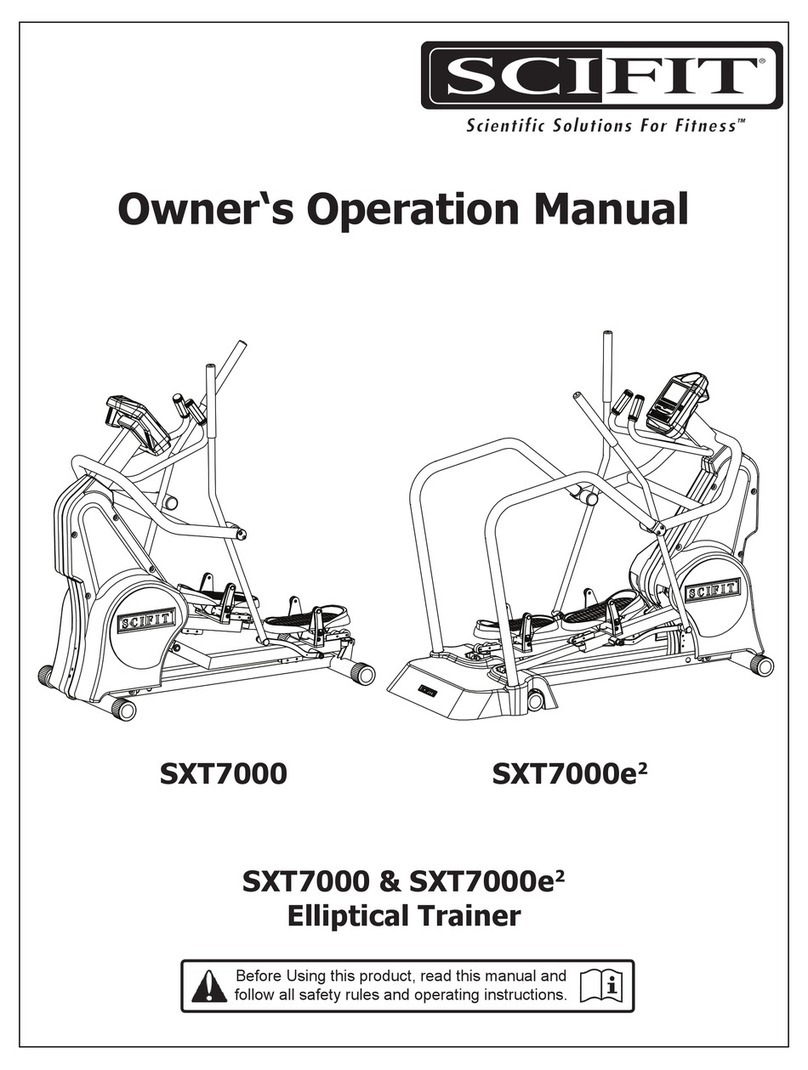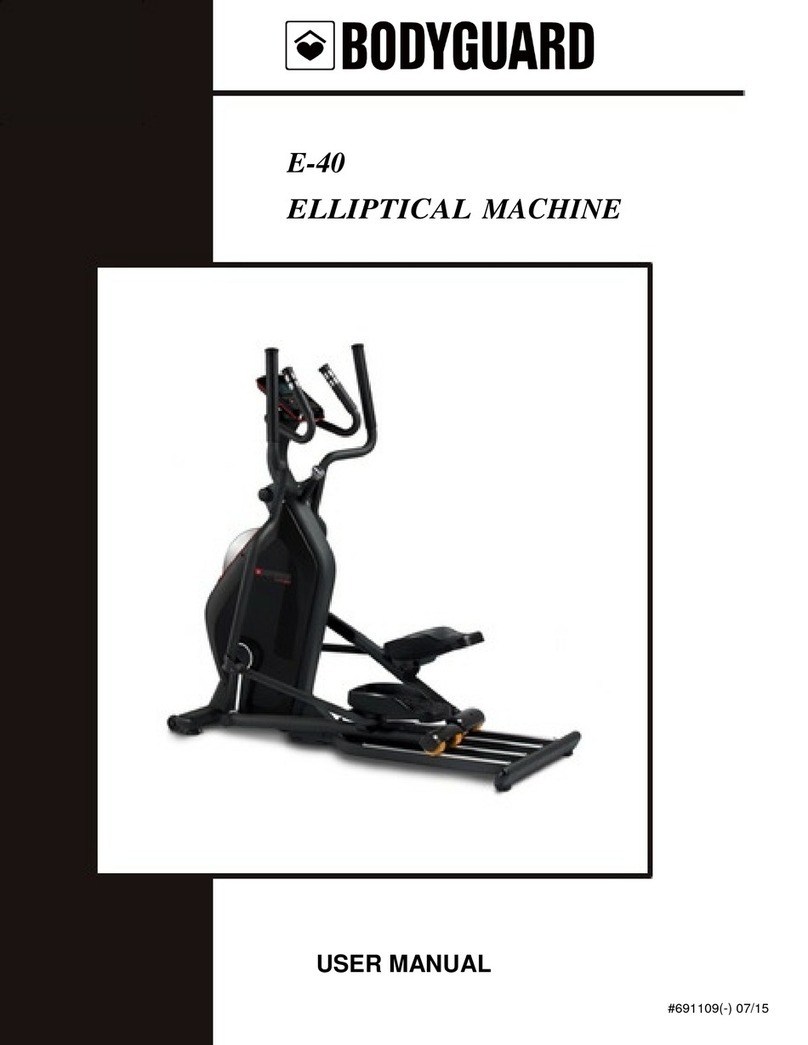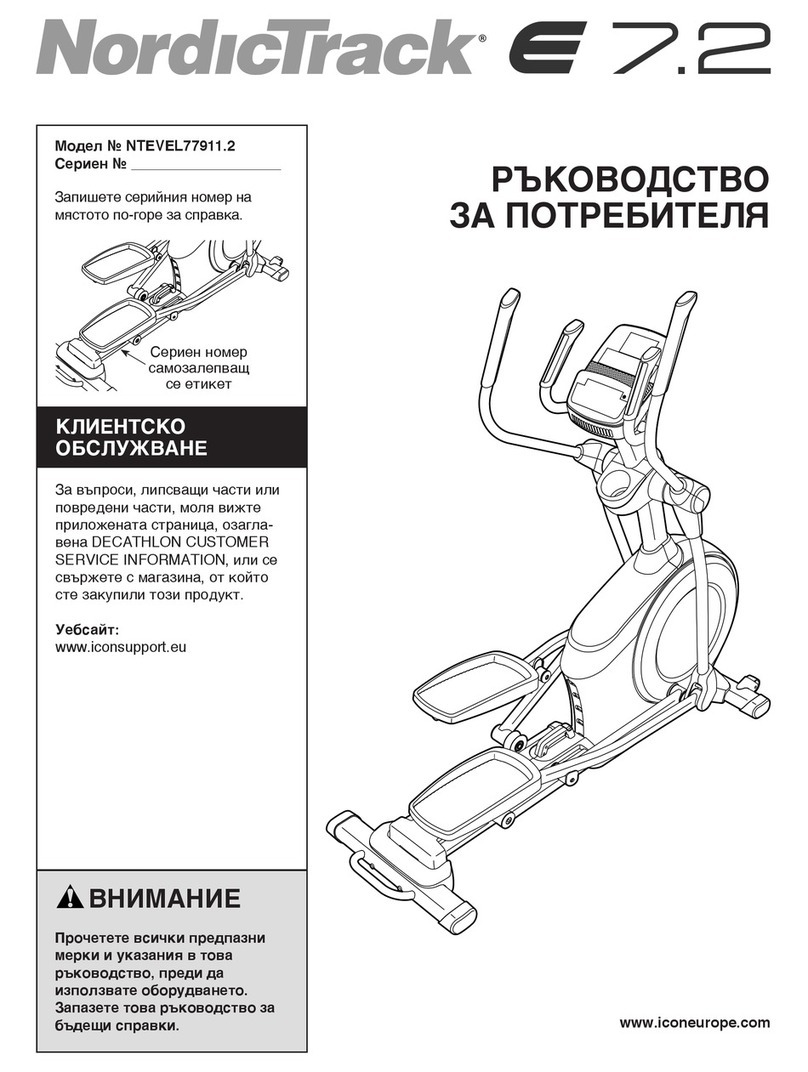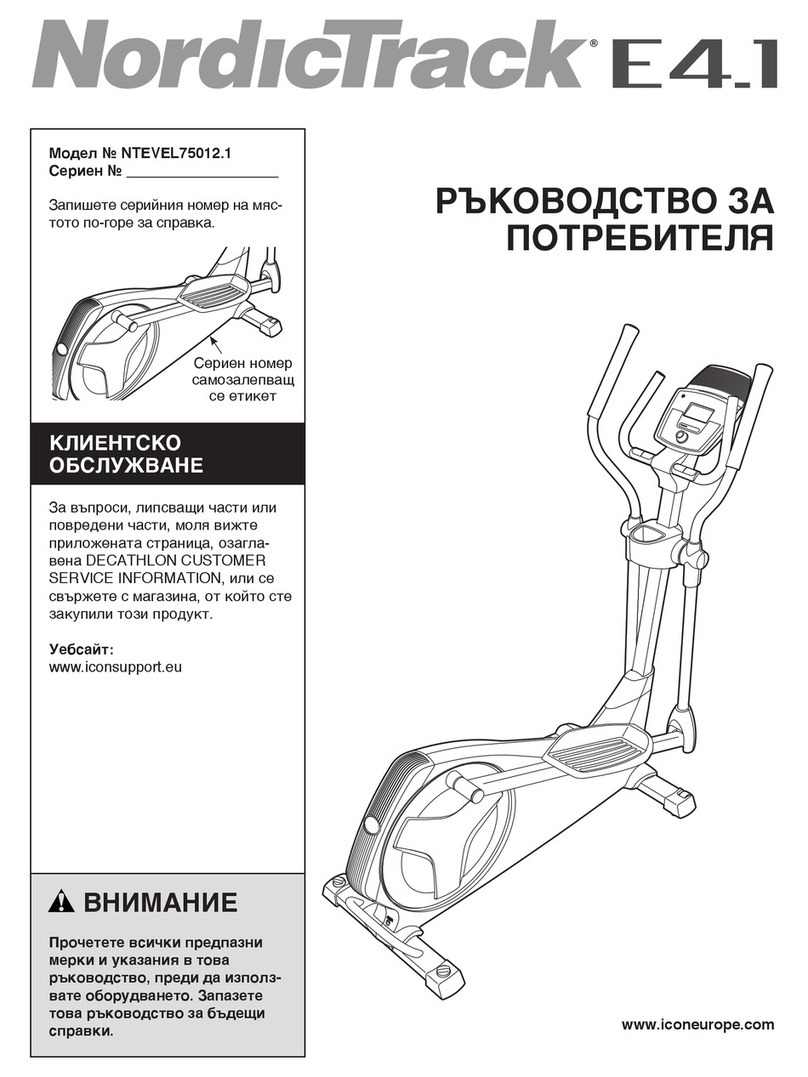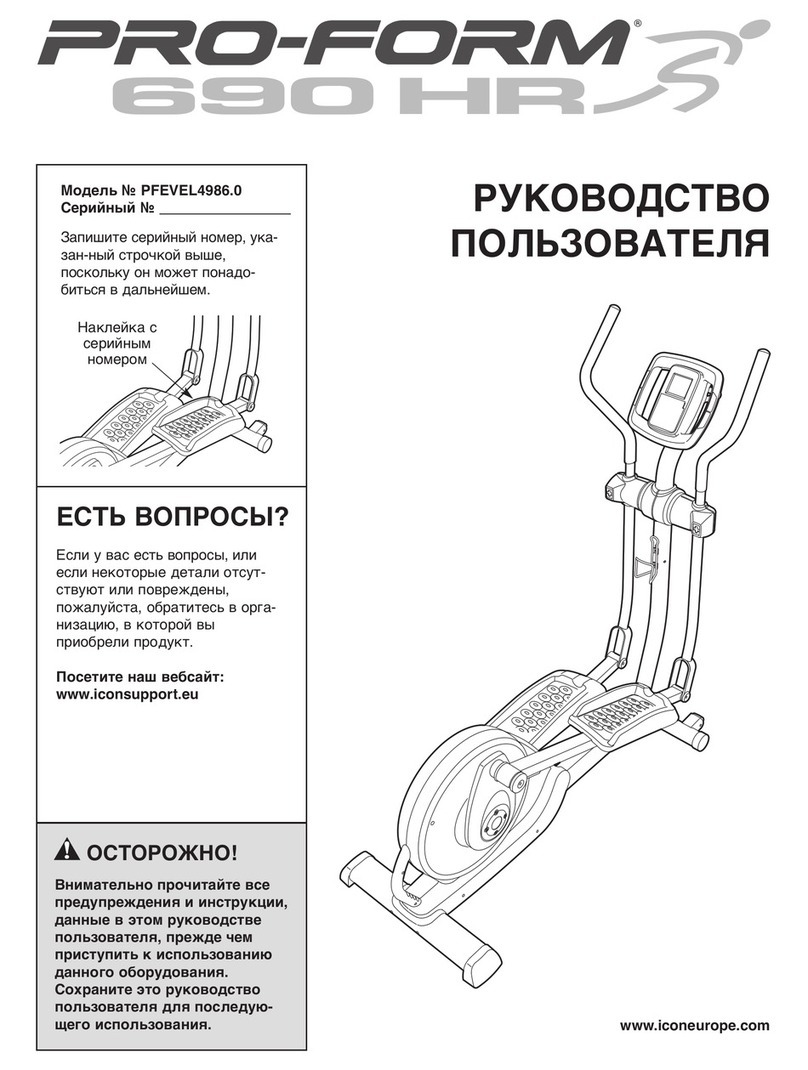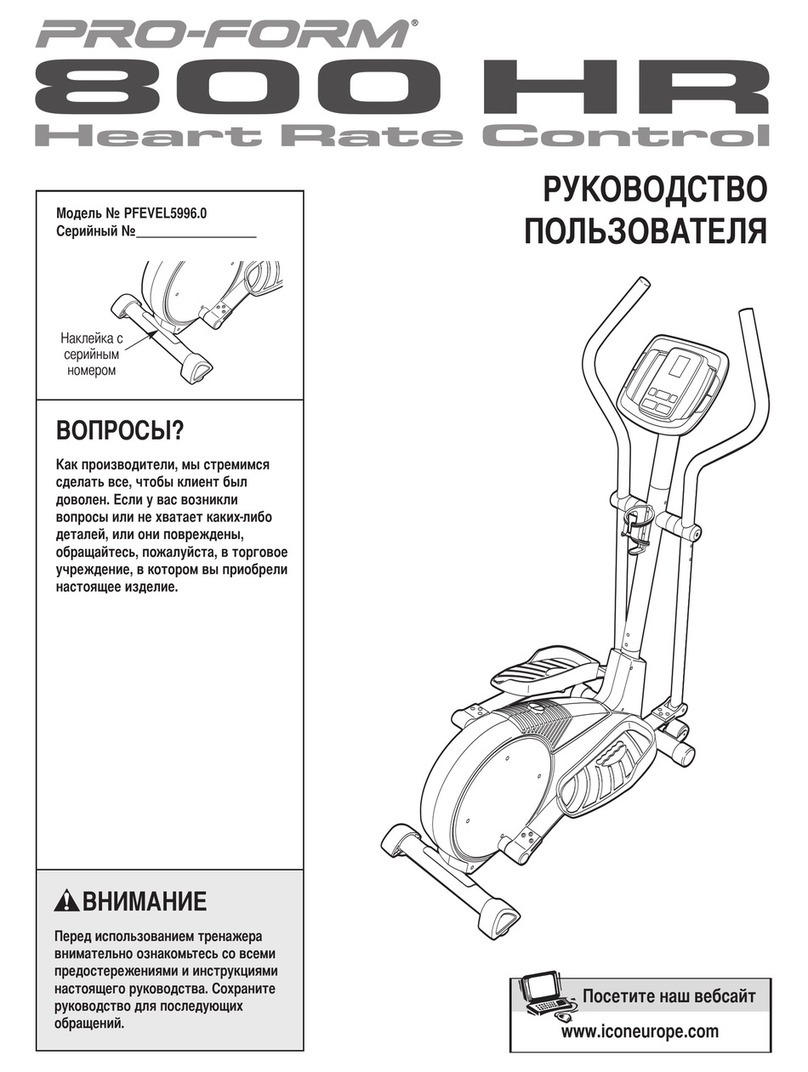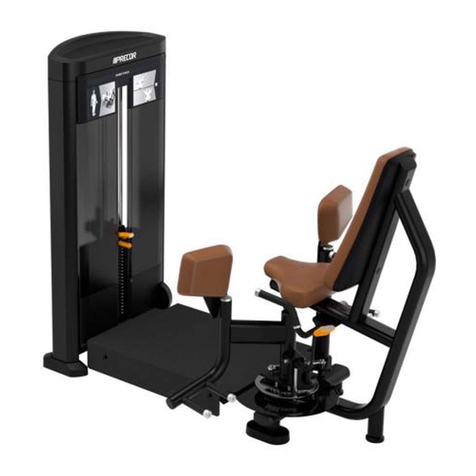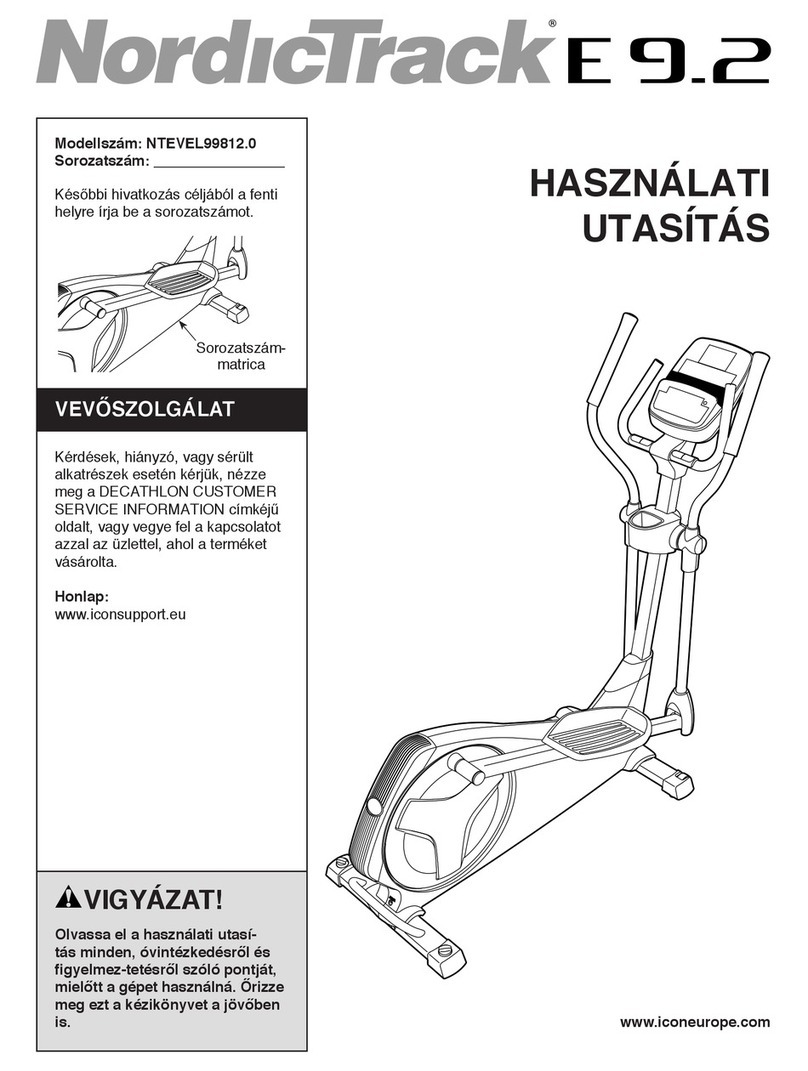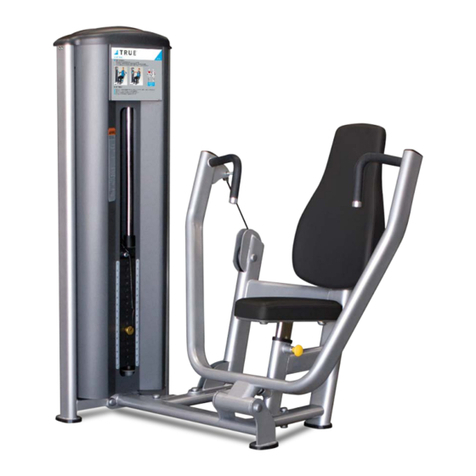
8
3. If the RPM window is displaying a
reading outside of the specified
range, proceed to the next step to
adjust the speed sensor.
4. Remove the hood.
5. The air gap between the brake
flywheel and speed sensor
should be 1/8” – 3/16”.
6. The speed sensor must be
pointed directly at the flywheel so
the eyes of the sensor will
intersect the center of the axis of
the brake. Adjust as needed.
7. Rotate the crank arm again at 1
rev. per second. If the RPM
window displays a number
greater than zero (0) but not
within 60 ±10 rpm, repeat steps 1
- 6. If a reading of zero (0) is
displayed, proceed to step 7.
8. Use a voltmeter to measure the
DC voltage across J5 pin 1 (+)
and J5 pin 2 (-) on the power
supply board. Refer to Fig. 4. The
voltmeter should read 4-5 VDC.
9. If there is no voltage, replace the
power supply board. If 4-5 volts
are present, replace the speed
sensor.
Procedure 4 – Removal and
Replacement of the Brake
Assembly
1. Remove each rail from its crank
arm spindle. First, remove the
snap ring at the spindle outer
edge; then slide the rail outward
and upward off the machine.
2. Remove the two screws holding
the bottle cage below the
handlebars. Remove the single
screw located just above the
power entry module.
3. Remove the five screws from
side of the left cover. Position
the left crank arm pointing
backward and parallel to the base
frame. Pull the front edge of the
cover and slide it inward and
backward to clear crank arm.
4. Repeat step 3 on right side.
5. Disconnect the two red wires on
the right side of brake.
6. Remove the ½” nuts and
lockwashers from both brake
studs.
7. Remove the 10-32 allen-head
screw on the right side of brake.
8. Remove the tensioning screws at
the top center of the brake on
each side of the sheet metal
frame.
9. Remove the V-belt from the
plastic pulley by wedging a
screwdriver blade between the
belt and pulley while rotating the
brake slowly downward to work
the belt off the pulley. Take care
not to damage pulley.
10.Lift the brake upward to clear
frame and pull the speed sensor
bracket off the left brake stud.
Remove the brake from the
machine and set aside to return
to SCIFIT (request a UPS call tag
by phone).
11.Hoist the replacement brake
above the frame mounting slots
and wrap V-belt around brake
hub. Position V-belt hanging
behind the idler pulley.
12.Put the speed sensor bracket on
the left brake stud. Note: If old
brake has a smaller diameter (7”
vs. 9”) a replacement speed
sensor bracket must be used.
Remove the single screw holding
the speed sensor to the old
bracket and attach the sensor,
